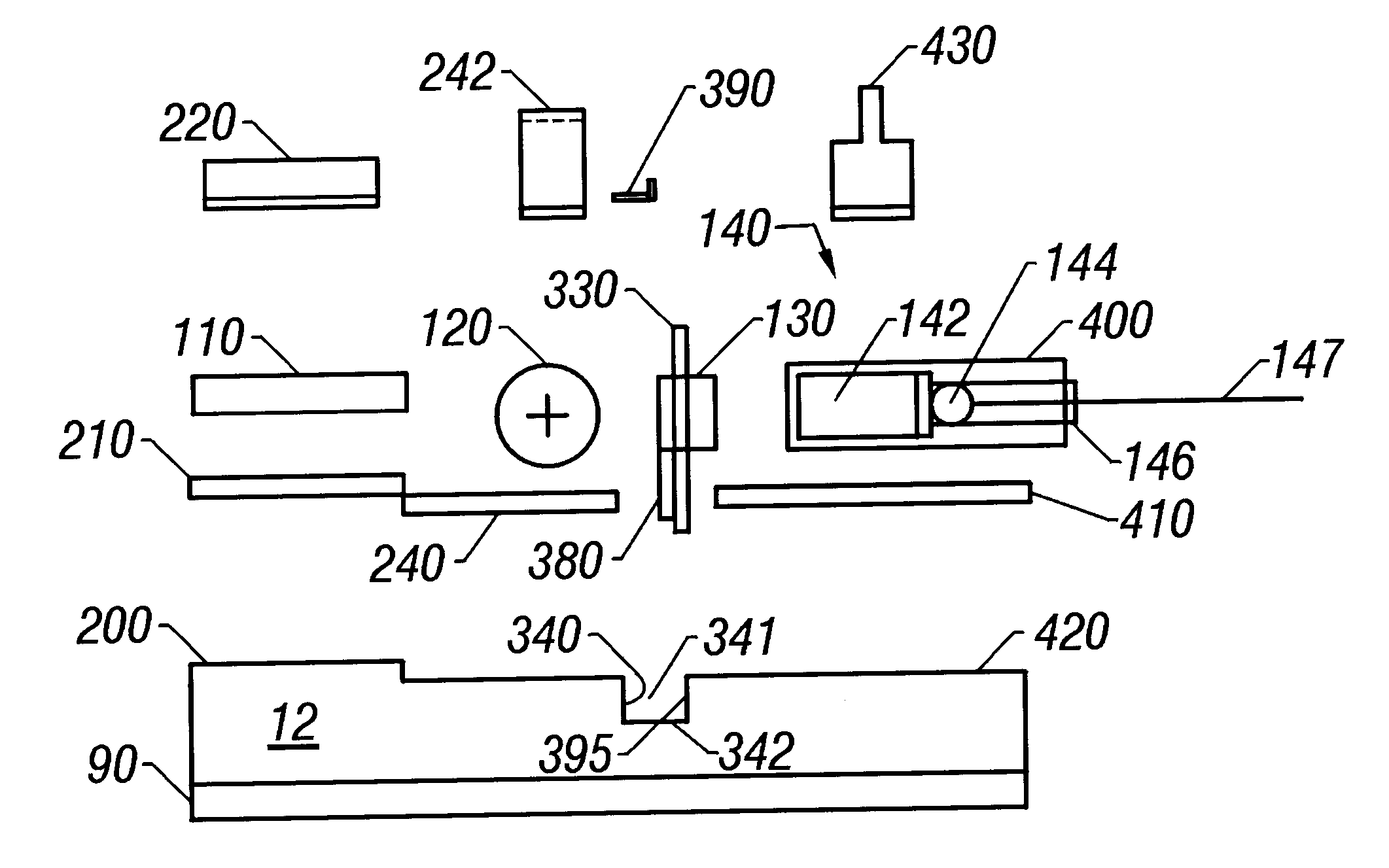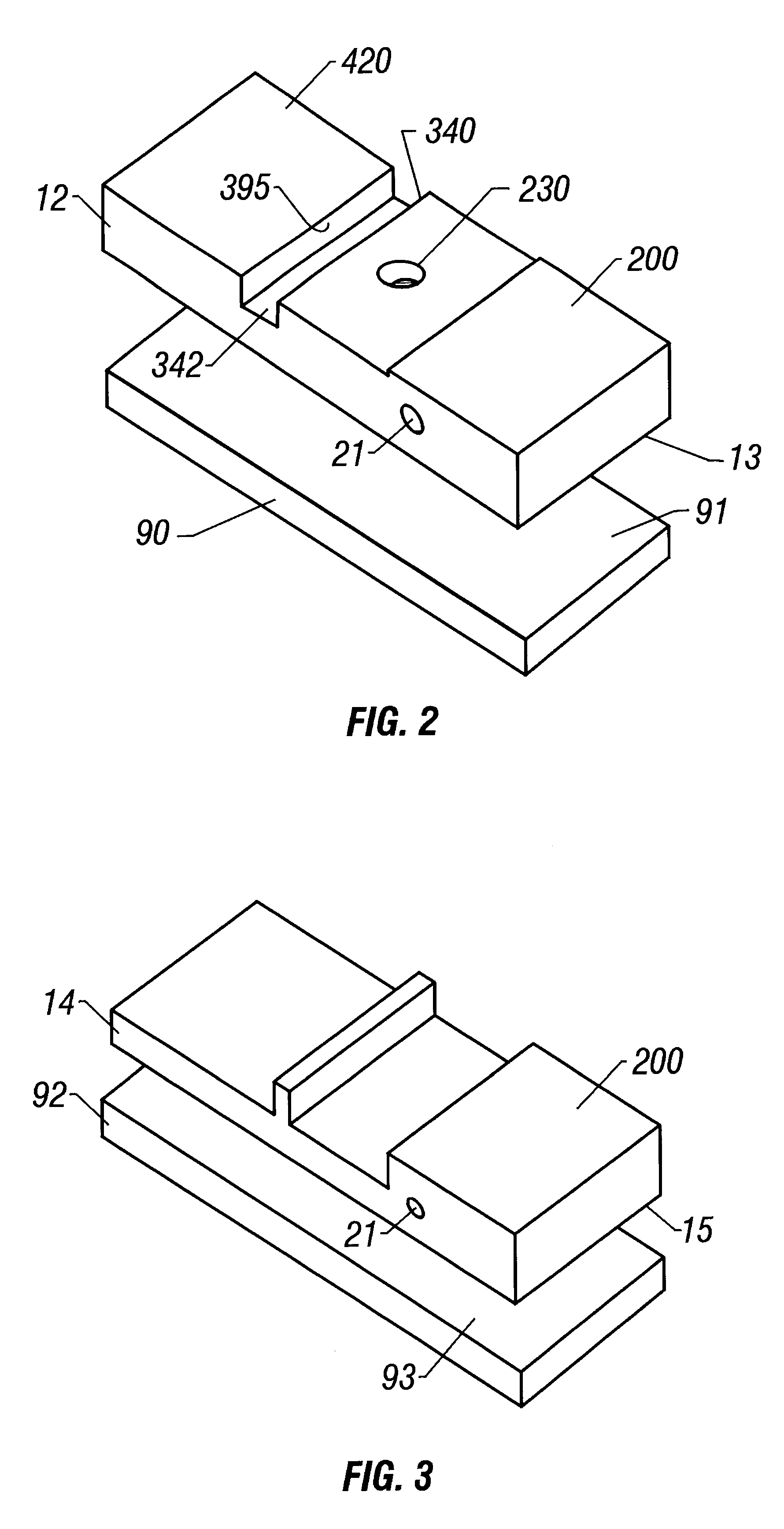Laser assembly platform with silicon base
a silicon base and assembly platform technology, applied in the field of lasers, can solve the problems of poor thermal conductivity, poor heat dissipation performance, and inability to overcome expensive or impossible problems
- Summary
- Abstract
- Description
- Claims
- Application Information
AI Technical Summary
Problems solved by technology
Method used
Image
Examples
Embodiment Construction
Specific embodiments of the invention are described below with reference to the Figures, in which like numbers represent the same or similar elements.
An assembly process and platform including a silicon optical bench or base is described. The elements of a laser such as a DPSSL are mounted on the silicon base to form a laser assembly . The process can provide a low cost, reliable method for manufacturing a laser with a silicon base. Generally, the silicon base is precisely formed as a monolithic structure with features that define the position of the optical components of the laser assembly. As a result, the manufacturing process is simplified and only a small amount of hand adjustment is required during assembly.
Use of silicon for the base can be advantageous because it is readily available, it has good thermal conductivity and it has a low coefficient of thermal expansion. Single-crystal silicon is particularly useful, although polycrystalline silicon could be used for some applic...
PUM
 Login to View More
Login to View More Abstract
Description
Claims
Application Information
 Login to View More
Login to View More - R&D
- Intellectual Property
- Life Sciences
- Materials
- Tech Scout
- Unparalleled Data Quality
- Higher Quality Content
- 60% Fewer Hallucinations
Browse by: Latest US Patents, China's latest patents, Technical Efficacy Thesaurus, Application Domain, Technology Topic, Popular Technical Reports.
© 2025 PatSnap. All rights reserved.Legal|Privacy policy|Modern Slavery Act Transparency Statement|Sitemap|About US| Contact US: help@patsnap.com



